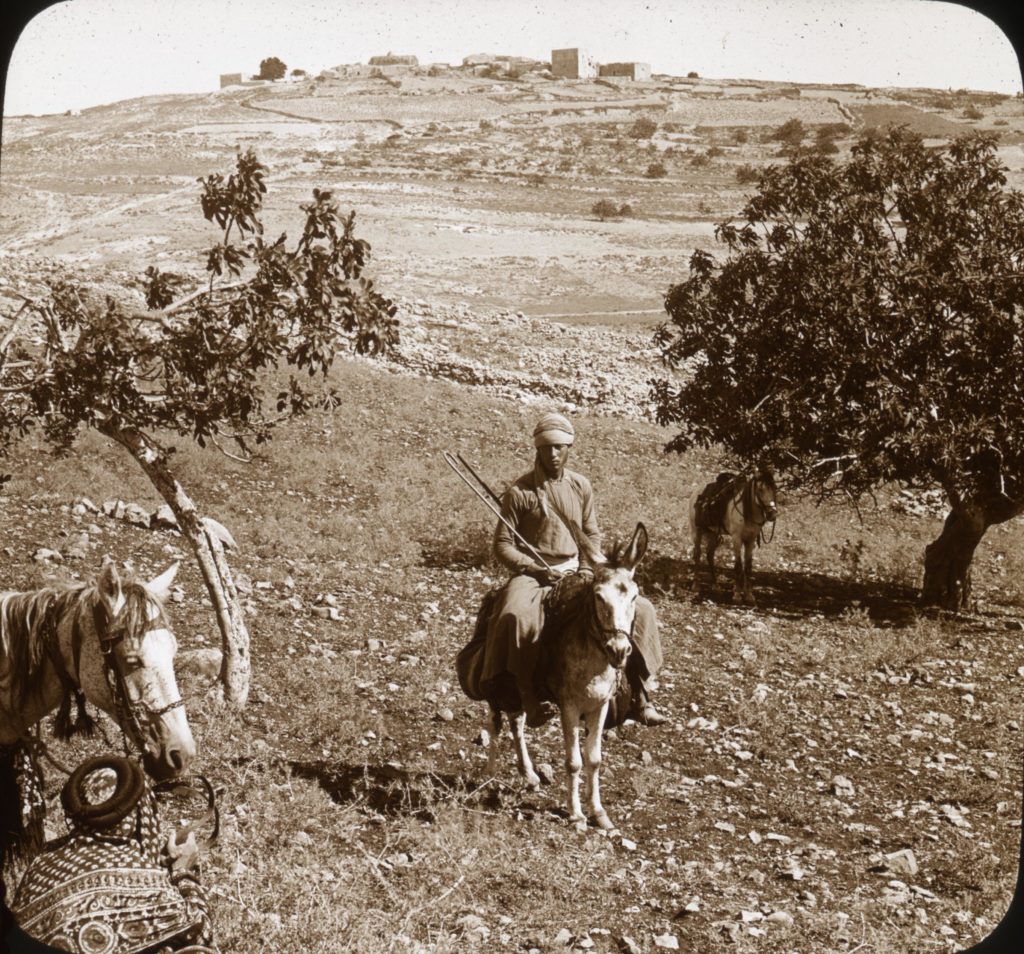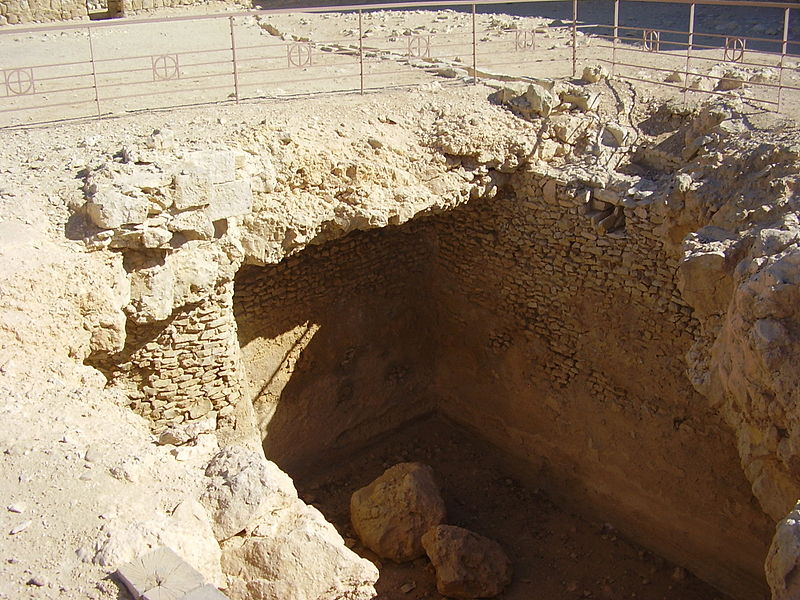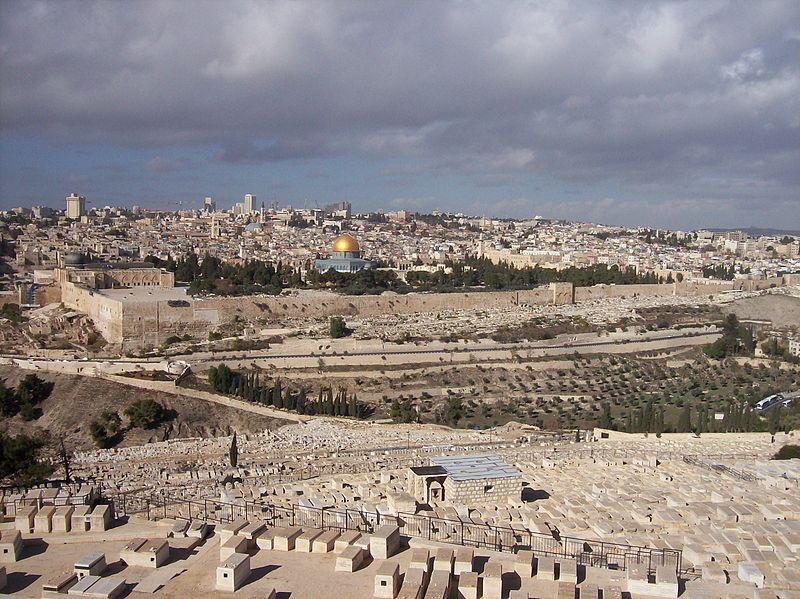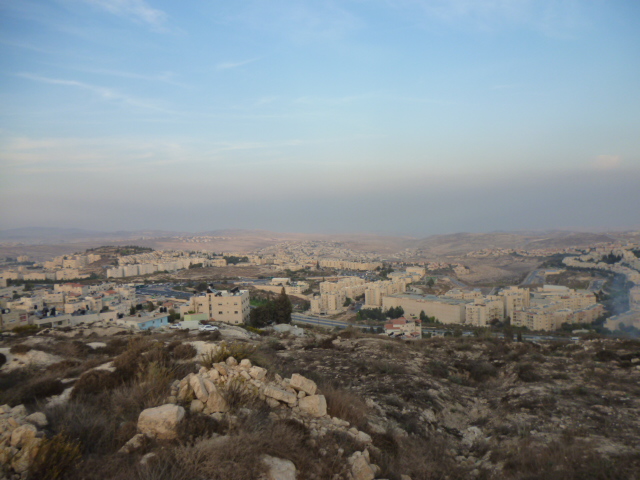The latter half of the First Book of Samuel is mainly devoted to the story of King Saul’s rise and fall and his obsessive attempt to kill his apprentice David. In chapter 19, David escapes Saul by seeking refuge in the prophet Samuel’s hometown of Ramah. Apparently, David hides out among a band of ecstatic prophets associated with Samuel. Saul sends messengers to extract David, but they are intercepted by the group of prophets. Then something truly odd happens. The messengers themselves fall into a prophetic frenzy. So Saul sends another group of messengers, but they too prophesy passionately. The same thing happens a third time. Finally Saul decides to go and fetch David himself:
Finally, he himself left for Ramah and went to the great cistern at Seku. And he asked, “Where are Samuel and David?” “Over in Naioth at Ramah,” they said. So Saul went to Naioth at Ramah. But the Spirit of God came even on him, and he walked along prophesying until he came to Naioth. He stripped off his garments, and he too prophesied in Samuel’s presence. He lay naked all that day and all that night. This is why people say, “Is Saul also among the prophets?” 1 Sam. 19:22-24
This is certainly a fascinating and very strange scene which raises many questions. What exactly does “prophesying” consist of? Can the same Hebrew root NBA נבא (“to prophesy”) refer to various activities, both good and bad? Why does the Spirit of God repeatedly come upon Saul and cause him to behave erratically? What is the meaning of the phrase “is Saul also among the prophets” and does it mean something different in 1 Samuel 10:10-12? All these are important questions, but they are not my focus here. In this post I want to take a closer look at a geographical element of the story which most readers probably gloss over, namely, the identity of “the great cistern at Seku.”
Our English translation is based on the Hebrew text of First Samuel 19:22 where we find the phrase בּוֹר הַגָּדוֹל אֲשֶׁר בַּשֶּׂכוּ bor ha-gadol asher ba-seku. The word bor can mean a well, a cistern or simply a pit, as seen for example in the well-known story of Joseph and his brothers (Gen. 37:22). Cisterns are very commonly found in the archaeological remains of all ancient periods in Israel. Because there is absolutely no precipitation during the long summer months, it has always been necessary to store the winter rains in a cistern beneath one’s home. So apparently, there was a large cistern located somewhere between Saul’s home in Gibeah and Samuel’s home in Ramah, both north of Jerusalem. But what does Seku refer to? Presumably this is a place in the vicinity of Gibeah and Ramah. But it is not mentioned anywhere else in the Bible. Some scholars have suggested that the name is not a proper toponym, but just a general location. Perhaps related to the root SKH שכה meaning “to look out” and “the seku” was a prominent hilltop from which watchmen guarded Ramah. This would make the name Seku etymologically similar to the name of another lookout point, Socoh, located in the Elah Valley and mentioned in the story of the battle of David and Goliath (1 Sam. 17:1) Other scholars have looked to alternative versions of the Bible for clarification. The Septuagint for example contains the following reading of 19:22:
…καὶ ἔρχεται ἕως τοῦ φρέατος τοῦ ἅλω τοῦ ἐν τῷ Σεφὶ…
…and he came as far as the well of the threshing floor that is in Sephi…
There are three differences between the Hebrew and Greek versions of this verse: (1) the Greek does not refer to the cistern as “great” while the Hebrew does (2) only the Greek mentions a “threshing floor” and (3) the Greek refers to the place as “Sephi” while the Hebrew calls it “Seku”.

Hilltop threshing floor located on the Greek island of Tinos courtesy of Costas Gontas via Wikimedia Commons
Let’s take a closer look at the second and third points. Much like the word “Seku”, the word “Sephi” should probably not be capitalized, as it does not refer to a specific place, but to a general location. The Greek word Σεφὶ (“Sephi”) is a transliteration of the Hebrew shefi שפי which means a “bare height”. It comes from the rather rare root SFH שפה meaning “to sweep bare” which is seen for example in Job 33:21: “his flesh is consumed away till it cannot be seen and his bones are rubbed away till they are invisible”. The phrase “bare height” refers to a windswept rocky hilltop where nothing grows (Isa. 41:18). Such high places were ideal for threshing wheat, as they were flat and exposed to the wind which was necessary to blow the chaff away (Hosea 9:1). Such places could also gather much water that could be conducted into an underground cistern, which would explain the mention of a “well”. Such sites were also ideal for as strategic lookout points, which would explain the name “Seku” not found in the Greek. Finally, and most importantly, such sites were commonly used for ritual purposes. The prophet Jeremiah castigates the Israelites for worshiping foreign gods on such “bare heights” (shefaim):
Look up to the bare heights, and see!
Where have you not been lain with?
By the waysides you have sat waiting for lovers,
like a nomad in the wilderness.
You have polluted the land
with your whoring and wickedness. Jer. 3:2
Perhaps most surprisingly, the summit of Mount Moriah – the very site which would eventually become the location of both Jerusalem Temples – was originally one such “bare height”. The Bible makes it explicitly clear that before this hill became the site of the Temple of the Lord, it was a threshing floor which belonged to the Jebusite king Araunah. Presumably, this threshing floor had cultic uses that expanded beyond mere agricultural tasks, although the Bible does not elaborate on this. David did not merit to build the first Temple, but one of the final things he does before dying is to purchase the land upon which the Temple would later be built by his son Solomon:
That day Gad came to David and said to him, “Go up and erect an altar to the Lord on the threshing floor of Araunah the Jebusite.” Following Gad’s instructions, David went up, as the Lord had commanded. When Araunah looked down, he saw the king and his servants coming toward him; and Araunah went out and prostrated himself before the king with his face to the ground. Araunah said, “Why has my lord the king come to his servant?” David said, “To buy the threshing floor from you in order to build an altar to the Lord, so that the plague may be averted from the people.” 2 Samuel 24:18:21
To summarize, Saul travels the short distance north from Gibeah (“the hill”) to find his enemy David hiding in Samuel’s hometown of Ramah (“the height”). But before he reaches Ramah, he has a transformative experience on a threshing floor located on an exposed lookout hill. Under the influence of the idolatrous religious rituals practiced in the cistern within this hill, he begins to babble ecstatically. When he finally reaches Ramah, the king strips off his clothes and makes a mockery of himself before Samuel and his prophets. The purpose of this short story is to demonstrate Saul’s unfitness for rule by depicting him as temperamental and vulnerable to heathen worship. Although the word Seku seems like a specific proper noun, it is more likely a general term for an elevated hilltop that was used for agrarian, military and cultic purposes.

Unfinished palace of King Hussein of Jordan on “Gibeah of Saul”, or “Tell el-Ful” meaning “mound of beans” in Arabic, a hill next to the modern Jerusalem neighbourhood of Pisgat Ze’ev. King Hussein of Jordan began construction on his Royal Palace in Tel el-Ful, but construction was halted when the Six-Day War broke out.









I’m confused why you state that Saul “has a transformative experience on a threshing floor located on an exposed lookout hill. Under the influence of the idolatrous religious rituals practiced in the cistern within this hill, he begins to babble ecstatically. When he finally reaches Ramah, the king strips off his clothes and makes a mockery of himself before Samuel and his prophets” when the verse indicates the spirit of God overcomes him. In addition, he’s in the company of prophets associated with Samuel and appears to Samuel himself as he continues to prophecy. Saul is not castigated or called out but, on the contrary, inquiry follows as to whether he too is among the prophets?
Teresa thanks for reading and commenting. There is no doubt that your interpretation is a perfectly legitimate way of reading the text of 1 Samuel 19. However, my sense is that the passage is not meant to be understood as a favorable depiction of Saul. On the contrary; Saul is being ridiculed here. Seen within the pronounced pro-David / anti-Saul context of the final chapters of 1 Samuel, it is not likely that Saul’s behavior in chapter 19 is meant to evoke the respect of the reader. The phrase “Is Saul also among the prophets” is meant sarcastically here (contrary to the same phrase in 10:11 where it is perhaps meant more earnestly). The point here is that Saul precisely is not among the prophets. It is inappropriate for the king of Israel to behave in the ecstatic manner of Samuel’s guild.